All about kohlrabi cabbage

Cabbage is a popular vegetable grown in most countries, including various regions of Russia. A few decades ago, gardeners were engaged in the cultivation of classic white cabbage. Now there are a lot of varieties of cabbage. One of them is kohlrabi. In order for the vegetable to ripen on time, it is necessary to carry out comprehensive and timely care for it.
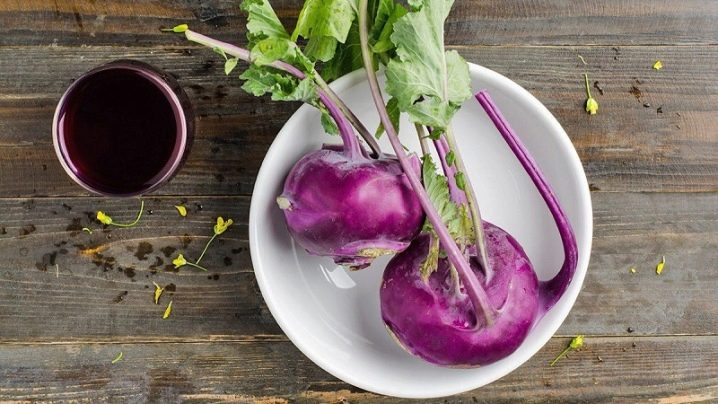
general description
Kohlrabi is a biennial plant that belongs to the Cabbage family. It is known that this vegetable was grown in ancient Rome, but it is native to the Mediterranean countries. Moreover, in most of them, kohlrabi is considered one of the varieties of turnips. So, from the Italian language the name literally translates as "cabbage turnip". Outwardly, the vegetable really resembles a turnip, but it tastes more like cabbage. The vegetable is popular not only in Russia, but also in Turkey, China, and Western Europe.
Kohlrabi has a very developed root system. Initially, the stem grows, then the formation of the fruit itself occurs. It has a round or oval shape and looks like a turnip. Its modification occurs depending on the degree of maturation. The shoot looks attractive, the stem is straight, the tops are large in size, dark green in color. The leaves are edible at a young age. The flower is not particularly pretty. The flowering period is in the middle of summer. Pollination by insects is required for seeds to ripen.
Kohlrabi is popular for its benefits, which include:
- high content of vitamin C;
- vegetable helps to normalize metabolism;
- fights the existing inflammatory process in the stomach and intestines;
- relieves the body of toxins.
In addition, the culture does not require any special care, so anyone can grow it.
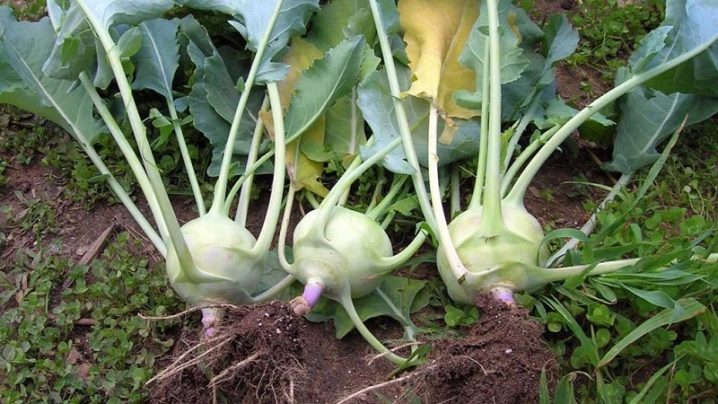
The best varieties
Kohlrabi fruits are light green or purple in color, inside each of them the flesh is white. The shade of the outer shell depends directly on the variety. And also they are divided according to the rate of maturation and the ability to be stored in the proper form for a certain amount of time.
Several of the most common varieties have the maximum set of positive characteristics.
- "Smak" - belongs to the category of early maturing varieties. Fruits are purple in color, the largest specimens reach 600-700 g in weight. By consistency, the pulp is dense and juicy. The only drawback is that it is not suitable for long-term storage.
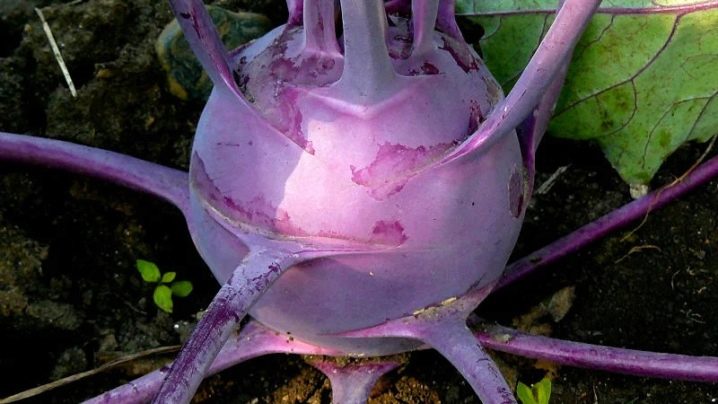
- Blue Planet. The variety got its name because of the color of the outer shell of the fruit (light blue or light blue). The pulp is juicy, soft. The variety is hybrid and keeps well.
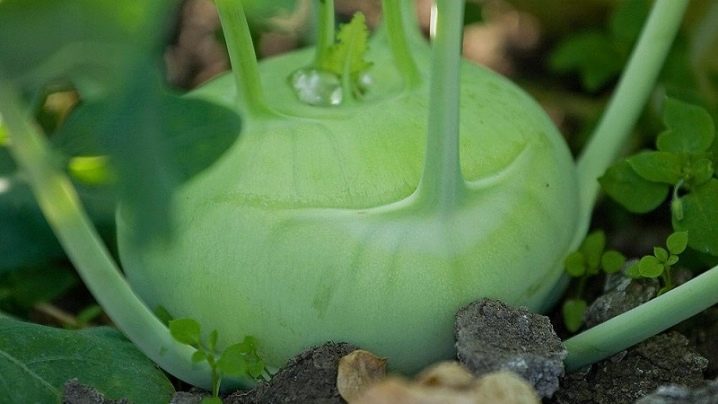
- "Moravia" – early maturing, light green. In shape, the fruits are round, flattened, the weight of individual specimens reaches 2 kg.
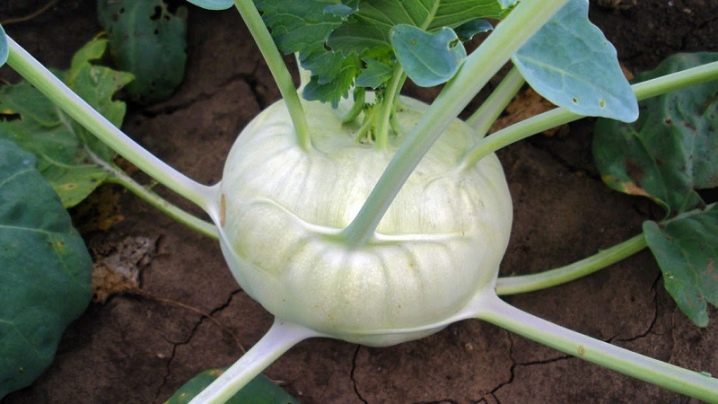
- "Pikant" - early ripening variety, characterized by a particularly soft and dense pulp.
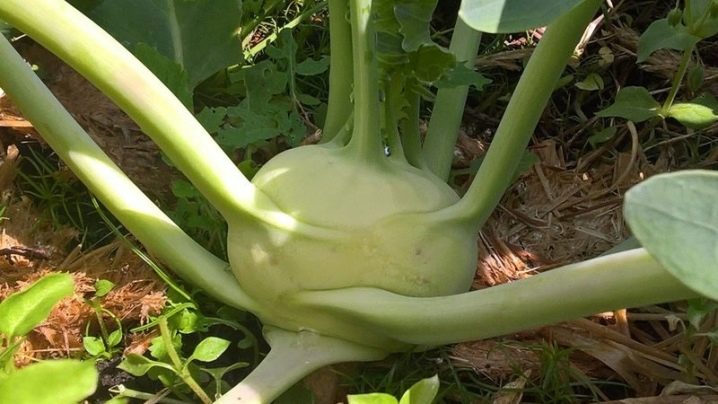
- "Delicacy red" Is a popular frost-resistant variety. The color of the head is red-violet.
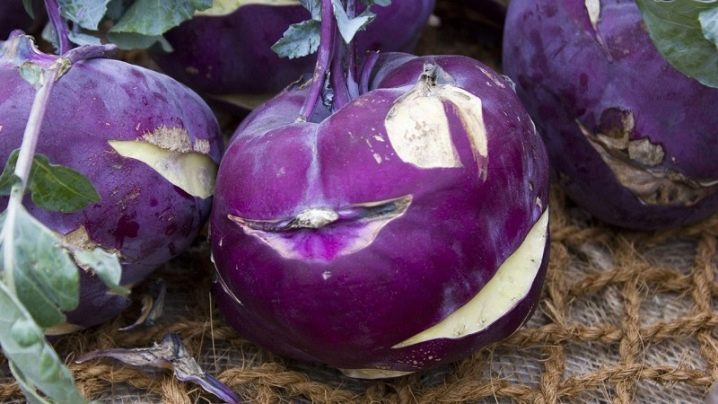
- Atena is an early kohlrabi variety. Differs in an impressive size of fruits (up to 3-4 kg), as well as a pleasant-tasting pulp.
This is not all, but only the most popular varieties. The choice is made depending on the requirements and individual preferences. The main thing is proper follow-up care.

Sowing preparation
Before sowing kohlrabi, it is recommended to carry out simple preparatory measures.They have a beneficial effect on germination, as well as on the further development of culture. First you need to decide on the site on which the vegetable will be grown in the future. It is better if it is a well-lit area, protected from drafts. Virtually any soil is suitable. The only exception is depleted soil. The acidity of the earth should be between 6.7 and 7.4 pH. The selected area must first be well dug onto the bayonet of a shovel, and also get rid of weeds, if any.
And you should also prepare the seeds. The process consists of several stages.
- Before sowing, the seeds are immersed in water preheated to a temperature of 50 degrees. It takes at least 15 minutes to keep them in a container with liquid.
- Then they need to be literally placed in ice water for one minute, and then in a solution of trace elements for 12 hours. Then it should be rinsed and transferred to the refrigerator for 24 hours. The ideal storage place for this period is the lower vegetable section. In no case should they be frozen.
- After that, it is recommended to move them to a small piece of natural moisturized tissue and wait for germination. As soon as this happens, you can transplant them into prepared containers with soil.
In the first days after planting, it is recommended to maintain the temperature within +20 degrees. To do this, crops must be kept under film or under glass.

Landing
Planting kohlrabi is carried out in two ways: through seedlings or directly by seeds into open ground. The choice is also individual.
Seedlings
If we talk about the seedling method, then for this it is necessary to use plastic containers or special peat pots filled with soft fertile soil. Some people choose to sow in a greenhouse. The first sowing is carried out in mid-March. If the seedlings are properly looked after, then the first harvest can be obtained in mid or early June. The second term for seedlings is the beginning of May, then it will be possible to harvest kohlrabi only closer to the middle of summer.
The process of planting and growing seedlings is as follows.
- Preparatory activities are being carried out with seeds.
- As soon as the first sprouts appear, you can proceed to picking if the seeds were not originally planted in separate containers.
- Approximately two weeks before transplanting into open ground, you can proceed to the hardening procedure. Seedlings need to be taken outside for a few minutes. It is recommended to increase the time each time.
During the growing season, the seedlings do not require special care. You just need to water it, and also protect it from the effects of drafts, do not allow burning by the sun.
Transfer to open ground is also carried out in several steps:
- shallow pits are dug in the prepared area at a distance of 15-20 cm from each other;
- kohlrabi seedlings are carefully moved in them;
- sprinkle with soil, watered well.
This completes the process.
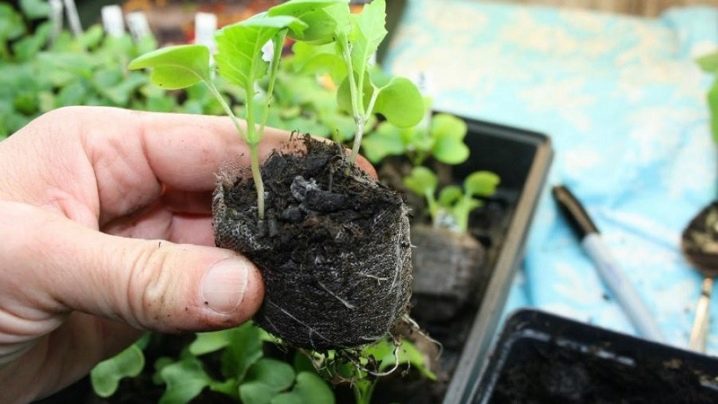
Seeds
You can plant kohlrabi directly in open ground with seeds. They do this in the last days of May. The process is as follows.
- Seeds are sown in loose prepared soil. It is not necessary to deepen them; it is permissible to sprinkle them with a small layer of soft earth.
- Watering after planting should be done as carefully as possible so that the seeds are not washed out.
- Cover with plastic and wait for shoots.
When the plants are strong, the greenhouse can be removed.
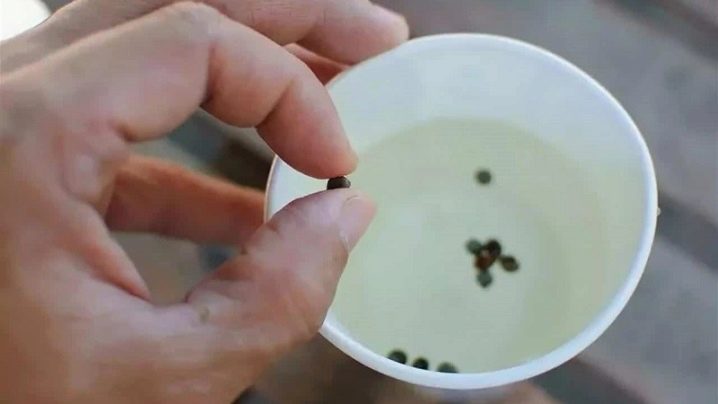
Care
Kohlrabi does not require special care. In fact, only watering is an important and integral part. At the very beginning, the soil is moistened once every 2-3 days. Then once a week is enough. You should be guided by the weather. If it rains, then the cabbage will do without watering. During a dry period, you need to look at the condition of the soil, it should always be slightly moistened. Sometimes you need to slightly loosen the soil. This should be done as carefully as possible so as not to damage the root crop.
Kohlrabi needs feeding. Fertilizers should be applied three times in one season:
- before planting, organic and mineral fertilizers are placed in the holes;
- at the stage of leaf formation, it is required to add trace elements;
- in an older age, the leaves are sprayed with a solution consisting of 10 liters of water, 1 tbsp. l. urea and 1 tbsp. l. potassium sulfate.
Top dressing is necessary for the normal development of culture and timely fruiting.

Diseases and pests
If we talk about diseases, then kohlrabi is most often affected by keel, powdery mildew, rot and black leg. In order to prevent this from happening, it is recommended to follow all the rules of agricultural technology. But if the culture does get sick, it is recommended to get rid of the infected plants in a timely manner in order to prevent further spread of the disease. Fungal diseases should be treated with solutions of the drugs Fundazol, Skor, Topaz and some others that contain identical active ingredients.
Among the pests, the following are found: cruciferous and black flea beetles, moth, moth, cabbage aphid, wireworm, rape flower beetle and some others. To drive away pests, it is recommended to treat the culture with drugs such as "Decis", "Corsair", "Ambush" and some others.

Harvesting and storage
Early maturing varieties are usually harvested after ripening. They are not intended for long-term storage. They are able to maintain proper taste only for 10-14 days in the refrigerator. Kohlrabi, planted in the middle of summer, can be safely kept until the air temperature begins to drop below zero degrees at night. Harvesting times are comparable to those in which the white cabbage is harvested.
Harvesting is best done in dry weather. You need to store the harvested fruits in a pit or refrigerator. The ideal storage option is dry sand boxes. In this case, the roots themselves should not come into contact with each other. In this state, kohlrabi can be stored for 5 to 8 months.
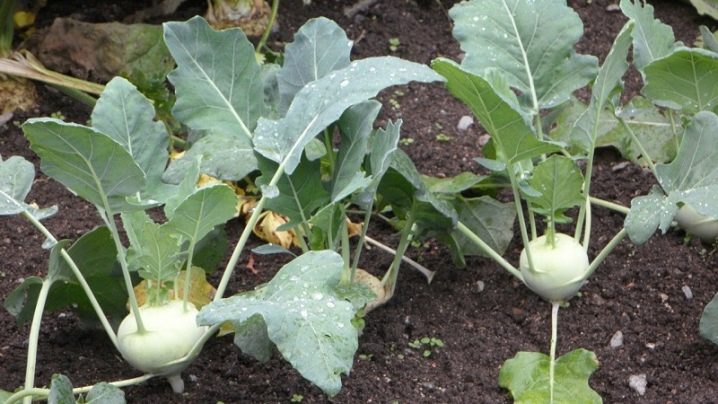













The comment was sent successfully.